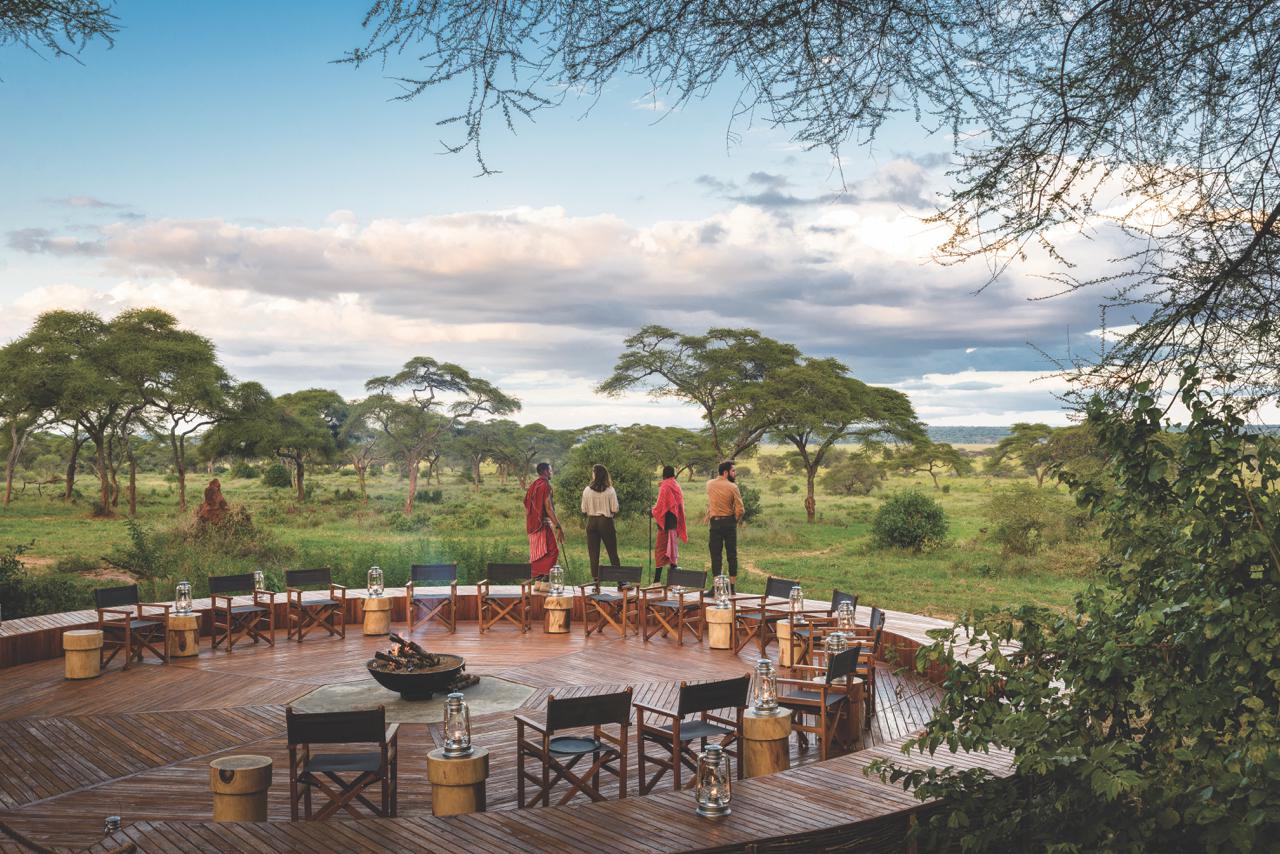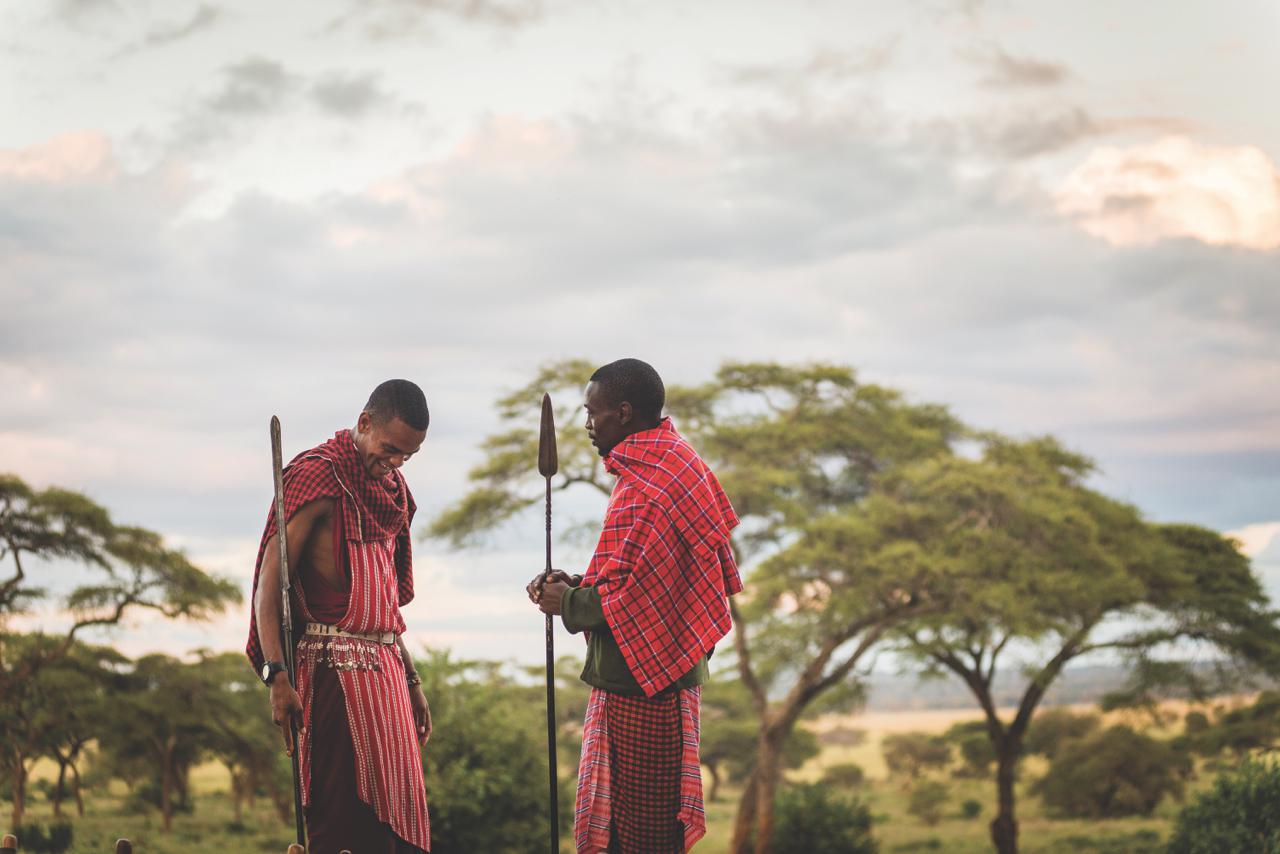Tanzania Safari
From Tanzania to Kenya: Retreat-Hopping in Africa


The glorious luxuries of a Sanctuary safari are matched by those found in the rhythm of the wild
First light glimmers across the Serengeti to the call of jackals and the arrival of tea to my tent, delivered in a basket with biscuits. I’m up and dressed and ready for a full day’s game drive, but there’s always time for a pot of Kilimanjaro tea on the verandah before joining ace guide Emmanuel in our mighty open-top Toyota. It is quite the off -road vehicle with comfy seats, padded side panels (useful for resting long lenses) and Maasai blankets for the chilly mornings.
Dawn is a special time at Sanctuary Kichakani in Tanzania,the light has a textural quality, like gossamer, as it settles on the unfurling plains where great herds of zebra and wildebeest graze, and giraffes drift like languid supermodels through the acacia trees.
This mobile camp in the northern Serengeti harks back to the birth of modern-day safari in the 1960s when Geoffrey Kent, founder of Sanctuary parent company Abercrombie & Kent, purchased a second-hand army truck, Scottish-made tents, sprung mattresses, and fine china and glassware before setting out with some intrepid tourists for the Great Rift Valley.
Kichakani relives those trailblazing days by packing up and heading south to follow the Great Migration, a complicated exercise that takes some three weeks. There are the 10 guest tents with flushing toilets and timber floors, a large dining tent, and all the support paraphernalia: kitchens, storerooms, linen room, logistics hub.
Kichakani relives those trailblazing days by packing up and heading south to follow the Great Migration, a complicated exercise that takes some three weeks. There are the 10 guest tents with flushing toilets and timber floors, a large dining tent, and all the support paraphernalia: kitchens, storerooms, linen room, logistics hub.
It’s quite an operation and quite a camp, with smart campaign furniture and delightful vintage detailing (old metal trunks and copper sinks) rendering it as romantic as anything in Out of Africa. Camouflaged among the thorn trees, my little tent has everything I need: a verandah with easy chairs and shaving or make-up mirror (no self-respecting safari maven sets out without lippy), huge bed with feather pillows, and bucket shower with loads of hot water.
Tea polished off , Emmanuel gets our game drive off to a flying start, a fresh kill, three lionesses and five cubs tucking into the remains of an unfortunate wildebeest, the cubs with bloodied faces, and one mum making quite a palaver of spitting the creature’s beard from between her teeth.
It’s an image we try to forget as we tuck into picnic breakfast, set out on a pretty rug with little leather campaign stools and more hot tea (a safari essential).
Safari has its own special rhythm that in many ways is more relaxing, and certainly much more exciting, than a beach resort. We may be up at dawn but there’s always time for an afternoon nap, and the only decision required all day is at sundowners, wine or G&T?
Thanks to the Sanctuary guides’ intimate knowledge of their patch, every day is crammed with wonders and all the drama of a nature documentary. My favourite moment comes when we spy the ‘border boys’, two cheetah brothers who cross back and forth between Tanzania and Kenya and were recently separated, and bereft. Emmanuel is overjoyed to see them reunited.
Back at Kichakani, camp manager Immi is waiting with G&Ts and canapes. He has a knack for delivering five-star service in the bush with an effortless grace, but it must be challenging, managing same-day laundry and daily-changing menus when he’s not heading off marauding baboons in the kitchen.
Dinner is taken in the large communal tent, a very stylish set-up decorated with large maps, sepia photos of the Kent family on safari and funky chandeliers fashioned from old metal torches. There are white linen cloths, proper glassware and three courses, followed by coffee by the campfire listening to the roar of lions.
Kichakani is one of four Tanzanian Sanctuary camps; we begin our adventure at Sanctuary Swala in the remote Tarangire National Park, famous for huge herds of elephants.
Guide Sammy meets us at the tiny Kuro bush airstrip and we get straight down to ‘spotting’: elephants before we’ve had time to unpack our cameras, great herds of buffalo and giant Baobab trees, so large they dwarf giraffe.
Refurbished in May, the camp nestles near a waterhole and manager Ben warns against venturing out after dark without an Askari (camp guard) as elephants and lions are regular visitors.
My large and very smart tented suite, with indoor and outdoor showers, tucks into the crook of an enormous Baobab with a large deck wrapping around tent and tree.
Almost hermetically sealed in mosquito netting in my huge four-poster, I feel snug as a bug in a rug and perfectly safe, but at 2am I’m woken by elephants right outside my tent shredding trees with mechanical efficiency, alarming enough without the whoop- whoop of hyenas and the blood-curdling shriek of the little hyrax. I don’t drop off again until I hear the reassuring footfall of the patrolling Askari.
Tea on the deck at dawn is in the company of monkeys and tiny dik-dik antelope playing skittishly. Today Sammy leads us around Tarangire’s vast marshlands towards the mountains to find lions and dancing ostriches and a giraffe barely six hours old. These vast green marshes are a game spotters’ Eden, their waters nurturing hippo, elephants, waterbucks and countless birds.
From Tanzania we cross the border into Kenya and the game- rich Masai Mara bound for Sanctuary’s original camp Olonana, first launched in 1999 and lavishly rebuilt this season as a luxury lodge with 14 enormous, glass-fronted suites strung along a private stretch of the Mara River.
The super smart lounge and dining areas are huge with wrap-around decking offering ample quiet spots for dining and cocktails alfresco. Each suite perches directly above the river and comes with a parading hippo or two.
From bed I can see the creatures coquettishly twirling their little ears and I later fall asleep to the sound of tumbling waters; it’s magical.
Below the bed, a handsome conversation pit opens out onto a large deck; the jumbo-size bathroom has a deep tub and crazy shower arrangement – three shower heads set along a stone plinth large enough to wash a hippo. With coffee machine and gratis mini bar stocked with wine, it’s tempting to stay in on hippo watch, but you’d be missing out.
The nearby game reserve offers thrilling sightings including rhino and great prides of lions. Our guide Abdul seems to have a sixth sense tipping up just after a cheetah has killed or plopping us right in the middle of the lions as they loll about like pussycats. He finds little treasures too, pretty wild gardenias and a newborn Topi antelope struggling to stand on spindly legs.
Latest Articles
Don't miss the latest from Luxury Travel
